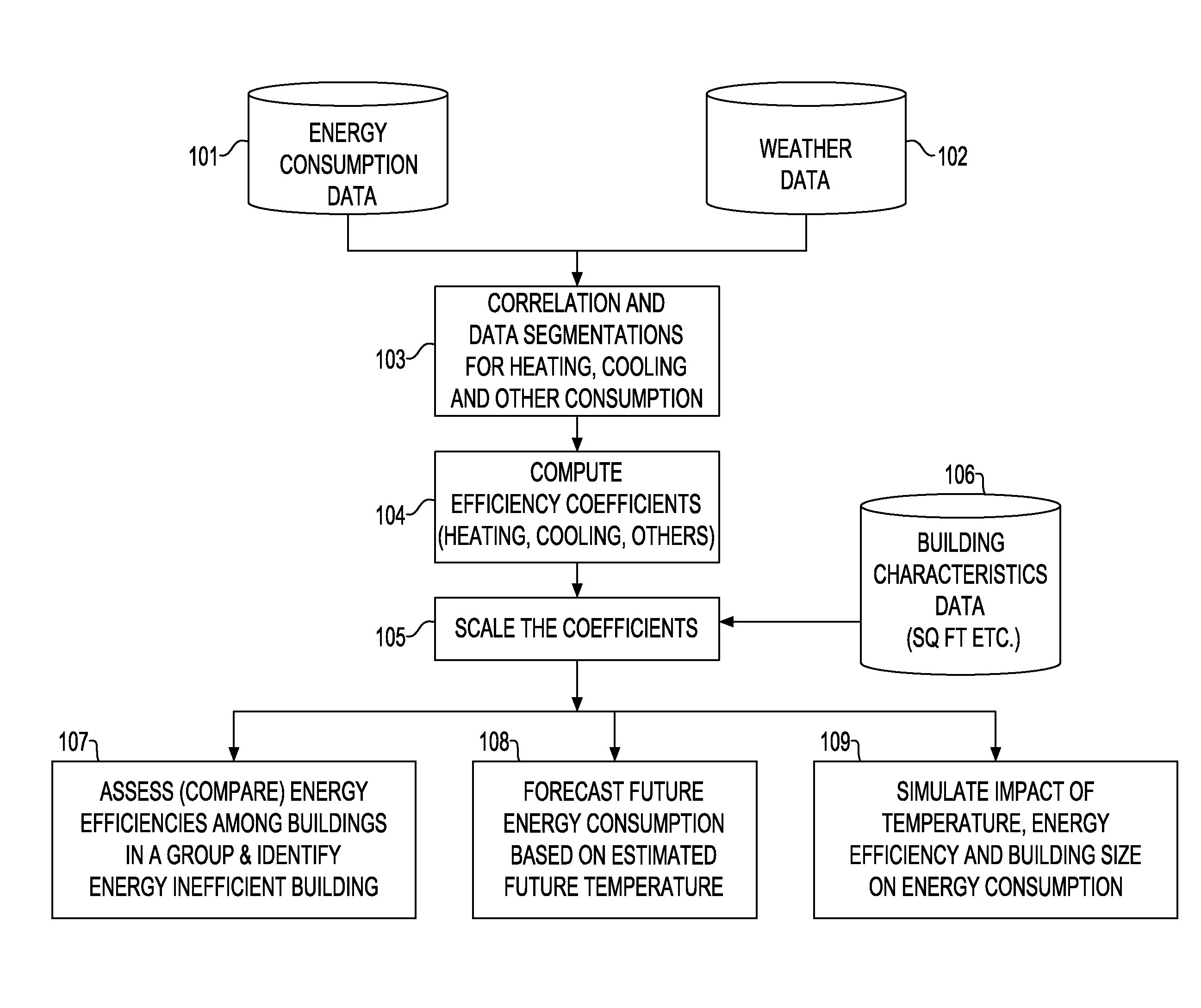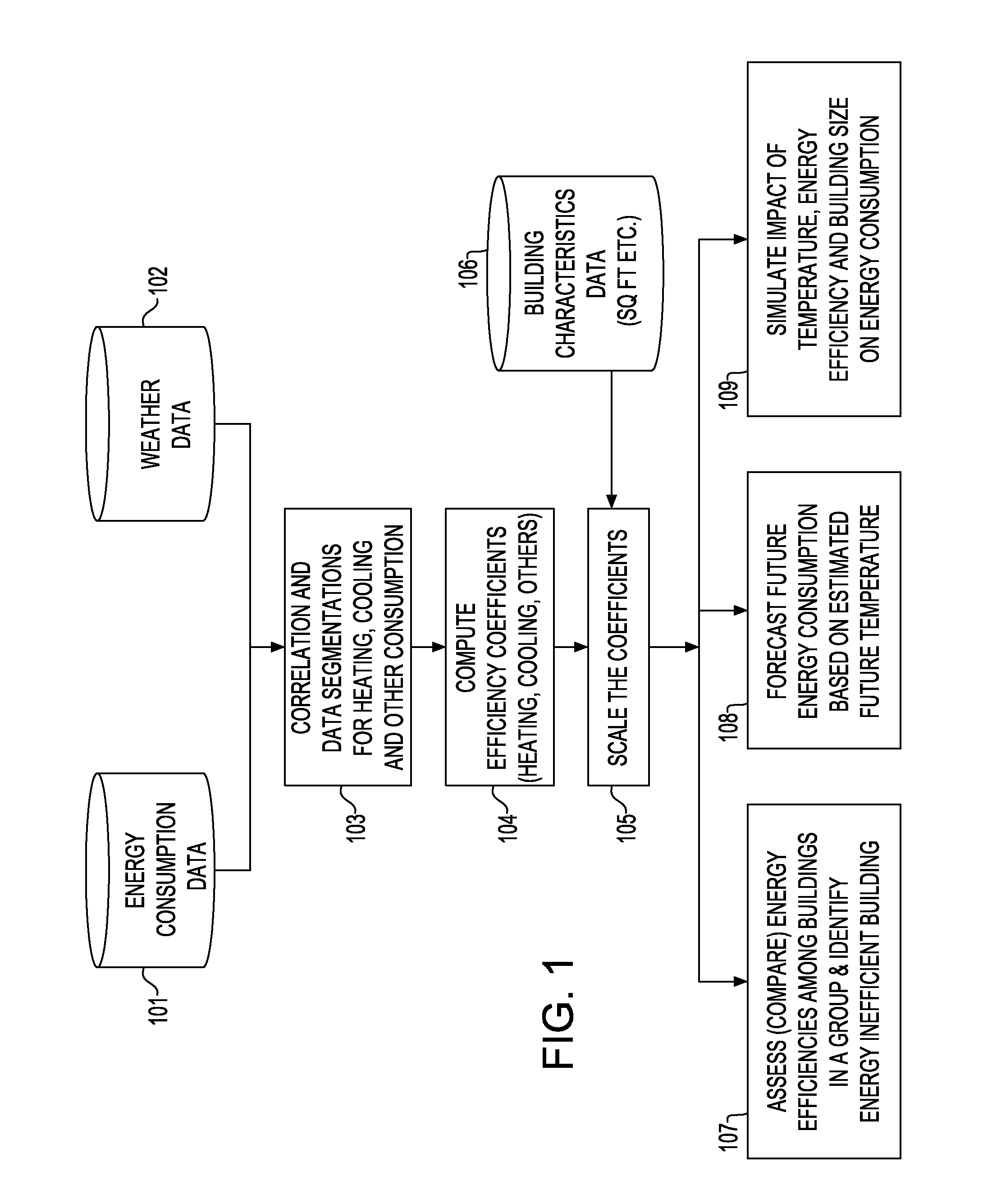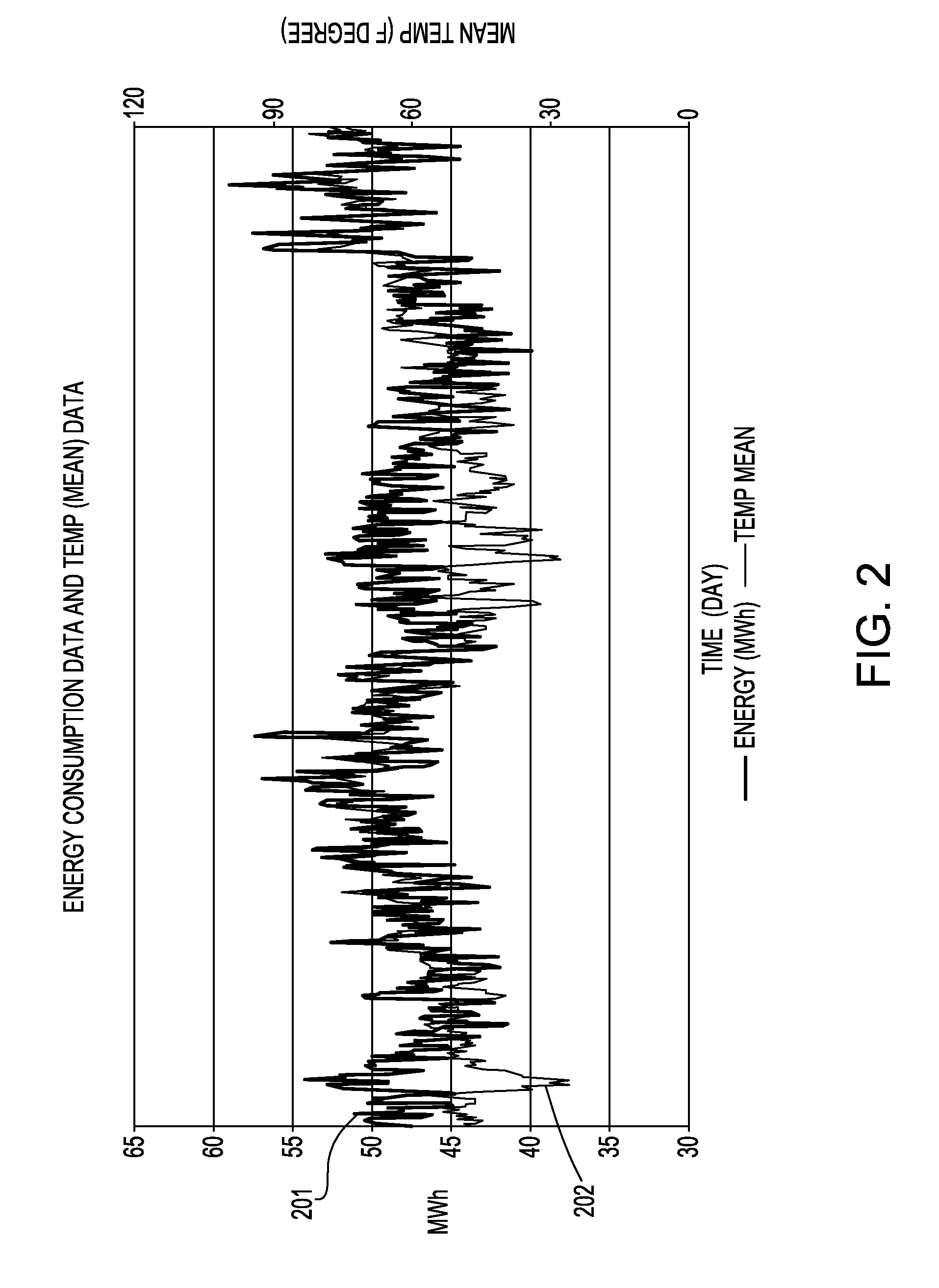Assessing, forecasting and simulating energy consumption of buildings using energy efficiency coefficients
a technology of energy efficiency coefficients and buildings, applied in the direction of temperatue control, process and machine control, instruments, etc., can solve the problems of not disclosing how, not disclosing how, and not disclosing how to compare energy efficiency, and achieve the effect of energy efficiency coefficients and energy efficiency
- Summary
- Abstract
- Description
- Claims
- Application Information
AI Technical Summary
Benefits of technology
Problems solved by technology
Method used
Image
Examples
Embodiment Construction
[0018]The present application discloses how to compute and scale energy efficiency coefficients of buildings for various energy consuming activities including for example, heating, cooling and other energy consuming activities, and use the coefficients to perform comparable assessment, forecasting and simulation of energy consumption of buildings. The present application also illustrates how to identify energy-efficient and inefficient buildings, how to forecast future energy consumption of the buildings with estimated future weather (e.g., temperature) using the energy efficiency coefficients, and how to simulate impact of hypothetical weather pattern (e.g., temperature) and energy efficiency on energy consumption also using the energy efficiency coefficients.
[0019]In another aspect, the present application discloses how to compute and scale multiple efficiency coefficients of energy consumption using time-series data on historic energy consumption of buildings, time-series data on...
PUM
 Login to View More
Login to View More Abstract
Description
Claims
Application Information
 Login to View More
Login to View More - R&D
- Intellectual Property
- Life Sciences
- Materials
- Tech Scout
- Unparalleled Data Quality
- Higher Quality Content
- 60% Fewer Hallucinations
Browse by: Latest US Patents, China's latest patents, Technical Efficacy Thesaurus, Application Domain, Technology Topic, Popular Technical Reports.
© 2025 PatSnap. All rights reserved.Legal|Privacy policy|Modern Slavery Act Transparency Statement|Sitemap|About US| Contact US: help@patsnap.com



